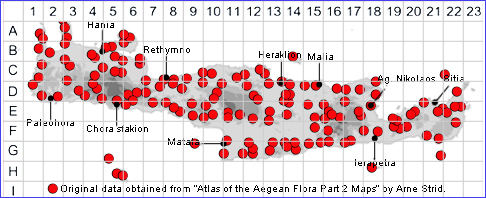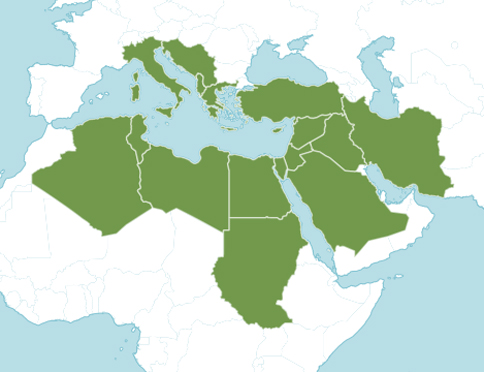SPECIES DESCRIPTION
BISCUTELLA DIDYMA
Family and Genus:- See- CRUCIFERAE
Common Name:- Biscutella, Buckler mustard
Homotypic Synonyms:- Biscutella apula, Biscutella didyma var. apula,
Clypeola didyma.
Meaning:- Biscutella (L) Two-small-trays, bi-scutella (scutella = tray) referring to
the fruits.
Didyma (L) Twin, twinned, double, equally-divided, in pairs.
General description:- Very variable, erect, short to medium, hair annual.
Stems:-
1) Up to 40 cm, simple or branched.
Leaves:-
1) Basal, up to 8 x 2·5 cm, rosulate or not, obovate-cuneate, dentate or denticulate.
± strigose with simple hairs.
2) Cauline, few and smaller.
Flowers:-
1) Pale yellow, occasionally tinged with lilac, 3-5mm, borne in dense, elongating,
racemes.
2) Sepals 2 mm,
3) Petals not notched, 2-4mm long, filaments filiform.
Fruit:-
1) Silicula consisting of paired disks, each lobe 4·5-7 x 9-12·5 cm.
Key features:-
1) Infructescence, dense.
2) Pedicels erecto-patent.
Habitat:- Dry, stony and rocky places in open dry shrubby vegetation, olive groves,
field margins and sandy coasts, on various substrates. 0-1500 m. Fl. Feb-June.
Distribution:- Widespread in Europe and western Asia. Widespread and common
on Crete.
.
Flowering time:- Feb-June.
Photos by:- Steve Lenton

Native to:
Albania, Algeria, Corse, Cyprus, East Aegean Is., Egypt, Greece, Iran, Iraq, Italy, Kriti, Lebanon-Syria, Libya, Palestine, Sardegna, Saudi Arabia, Sicilia, Sinai, Sudan, Tunisia, Turkey, Yugoslavia
Albania, Algeria, Corse, Cyprus, East Aegean Is., Egypt, Greece, Iran, Iraq, Italy, Kriti, Lebanon-Syria, Libya, Palestine, Sardegna, Saudi Arabia, Sicilia, Sinai, Sudan, Tunisia, Turkey, Yugoslavia


GLOBAL DISTRIBUTION

Native